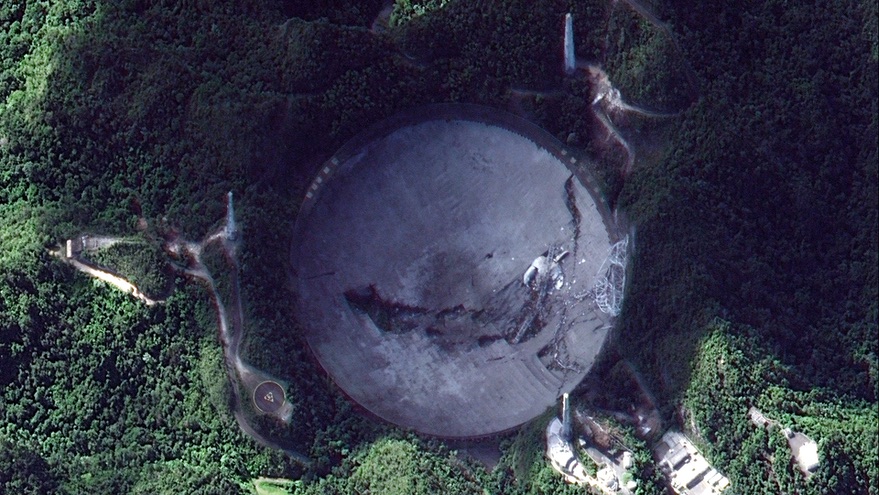WASHINGTON — The governor of Puerto Rico says she backs rebuilding the Arecibo radio observatory, but a final decision on whether, and how, to reconstruct the giant telescope could take years.
Governor Wanda Vázquez Garced signed an executive order Dec. 28 stating it was the formal policy of the commonwealth to rebuild the 305-meter radio telescope at Arecibo Observatory. The telescope’s 900-ton observing platform fell to the dish below when several cables snapped early Dec. 1, weeks after the National Science Foundation (NSF) said it was unsafe to repair cables at the telescope that previously broke.
“The Government of Puerto Rico states, as a matter of public policy, its conviction to the reconstruction of the Arecibo Radio Telescope and the prompt resumption of world class science and education at the Arecibo Observatory,” the order states.
The order adds that the Puerto Rican government foresees rebuilding a “newly designed” telescope that would have a larger effective aperture and wider field of view. It also calls for a more powerful radar transmitter, which is used for solar system observations such as characterizing near Earth asteroids.
The order states the government is “assigning and allocating” $8 million to start the reconstruction work. Vázquez Garced, in a separate statement, said the funding is from budget surpluses from previous years, but didn’t elaborate further on the source of the funding. The funding, she said, would be used for removing debris from the telescope’s collapse and other environmental remediation work.
The $8 million, though, is only a small down payment on the cost of rebuilding the telescope, with informal estimates in the astronomy community projecting it to cost several hundred million dollars. Vázquez Garced, in her executive order, gave no estimate herself but said it would be funded by “state, federal and private sources (including public-private partnerships and state-federal partnerships).”
The NSF, notably, has not committed to rebuilding Arecibo. At a briefing two days after the telescope’s collapse, agency officials said their focus was on the assessment of the damage and cleanup efforts.
“NSF has a very well-defined process for funding and constructing large-scale infrastructure, including telescopes,” Ralph Gaume, director of NSF’s Division of Astronomical Sciences, said at that briefing. “It’s a multiyear process that involves congressional appropriations and the assessment and needs of the scientific community. So, it’s very early for us to comment on the replacement.”
Congress, which would have to allocate any federal funding for rebuilding Arecibo, did not earmark any money for doing so in the fiscal year 2021 spending bill passed in December. However, the report accompanying the bill directed NSF to prepare a study on the telescope’s collapse and cleanup efforts, as well as “the process for determining whether to establish comparable technology at the site, along with any associated cost estimates.”
That report is due to Congress 60 days after the bill was enacted, which took place Dec. 27. However, it is not uncommon for agencies to deliver such reports weeks, or even months, late.
At the same time, the astrophysics decadal survey, which sets priorities for both space-based and ground-based astronomy for the next 10 years, is completing its study, now scheduled for release in the spring. The NSF said in December that it informed the survey’s steering committee of Arecibo’s collapse but did not make any special requests for it to evaluate the impact of the loss of the telescope.
